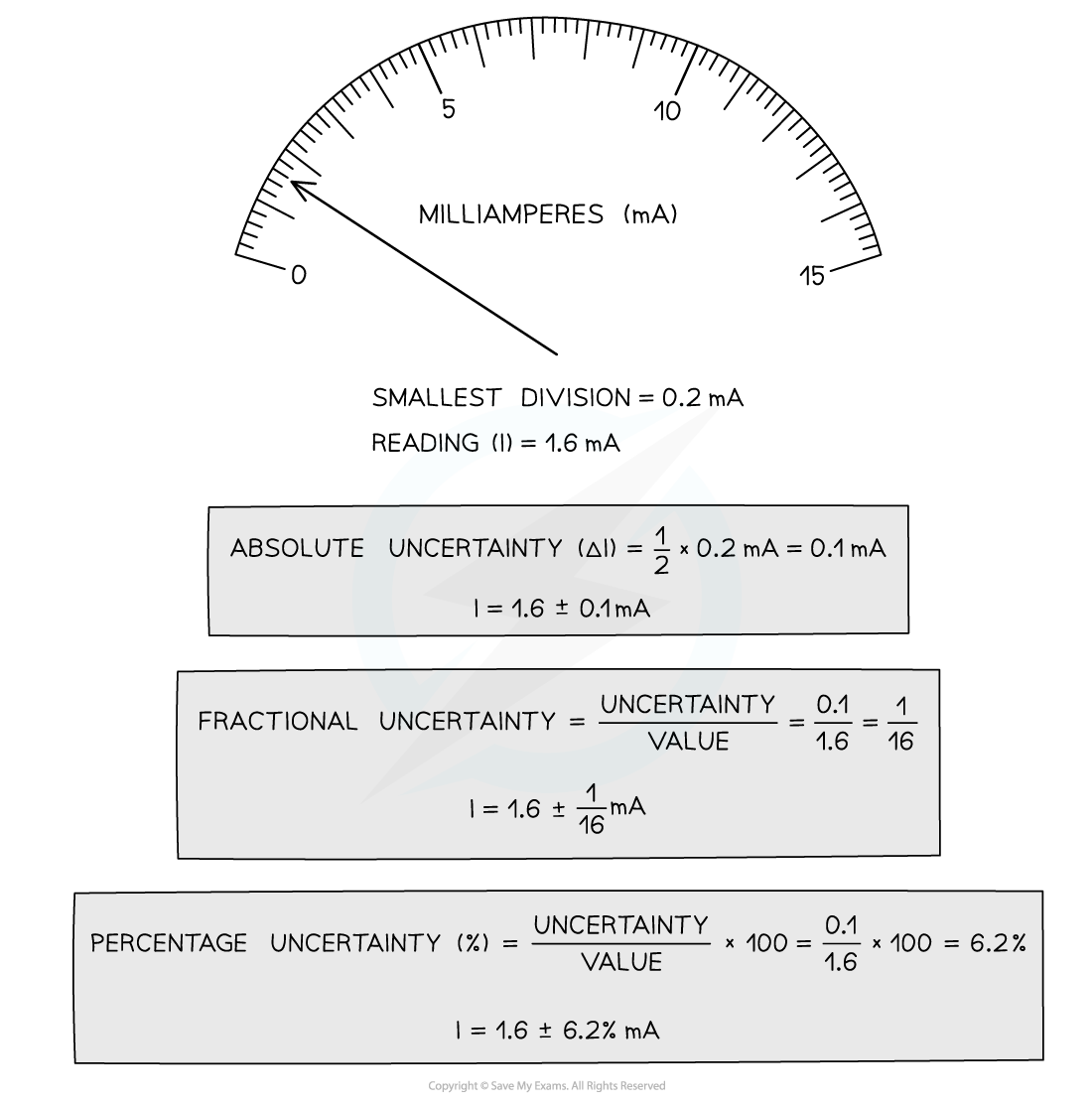Calculating Uncertainties
- There is always a degree of uncertainty when measurements are taken; the uncertainty can be thought of as the difference between the actual reading taken (caused by the equipment or techniques used) and the true value
- Uncertainties are not the same as errors
- Errors can be thought of as issues with equipment or methodology that cause a reading to be different from the true value
- The uncertainty is a range of values around a measurement within which the true value is expected to lie, and is an estimate
- For example, if the true value of the mass of a box is 950 g, but a systematic error with a balance gives an actual reading of 952 g, the uncertainty is ±2 g
- These uncertainties can be represented in a number of ways:
- Absolute Uncertainty: where uncertainty is given as a fixed quantity
- Fractional Uncertainty: where uncertainty is given as a fraction of the measurement
- Percentage Uncertainty: where uncertainty is given as a percentage of the measurement

- To find uncertainties in different situations:
- The uncertainty in a reading: ± half the smallest division
- The uncertainty in a measurement: at least ±1 smallest division
- The uncertainty in repeated data: half the range i.e. ± ½ (largest - smallest value)
- The uncertainty in digital readings: ± the last significant digit unless otherwise quoted
- The uncertainty in the natural log of a value: absolute uncertainty in ln(x) =

How to calculate absolute, fractional and percentage uncertainty
- Always make sure your absolute or percentage uncertainty is to the same number of significant figures as the reading
Combining Uncertainties
- When combining uncertainties, the rules are as follows:
| Operation | Example | Propagation Rule |
| Addition & Subtraction |
The sum of the absolute uncertainties |
|
| Multiplication & Division |
The sum of the fractional uncertainties |
|
| Power |
The magnitude of n times the fractional uncertainty |
Adding / Subtracting Data
- Add together the absolute uncertainties

Multiplying / Dividing Data
- Add the percentage or fractional uncertainties

Raising to a Power
- Multiply the percentage uncertainty by the power

Examiner Tip
Remember:
- Absolute uncertainties (denoted by Δ) have the same units as the quantity
- Percentage uncertainties have no units
- The uncertainty in constants, such as π, is taken to be zero

